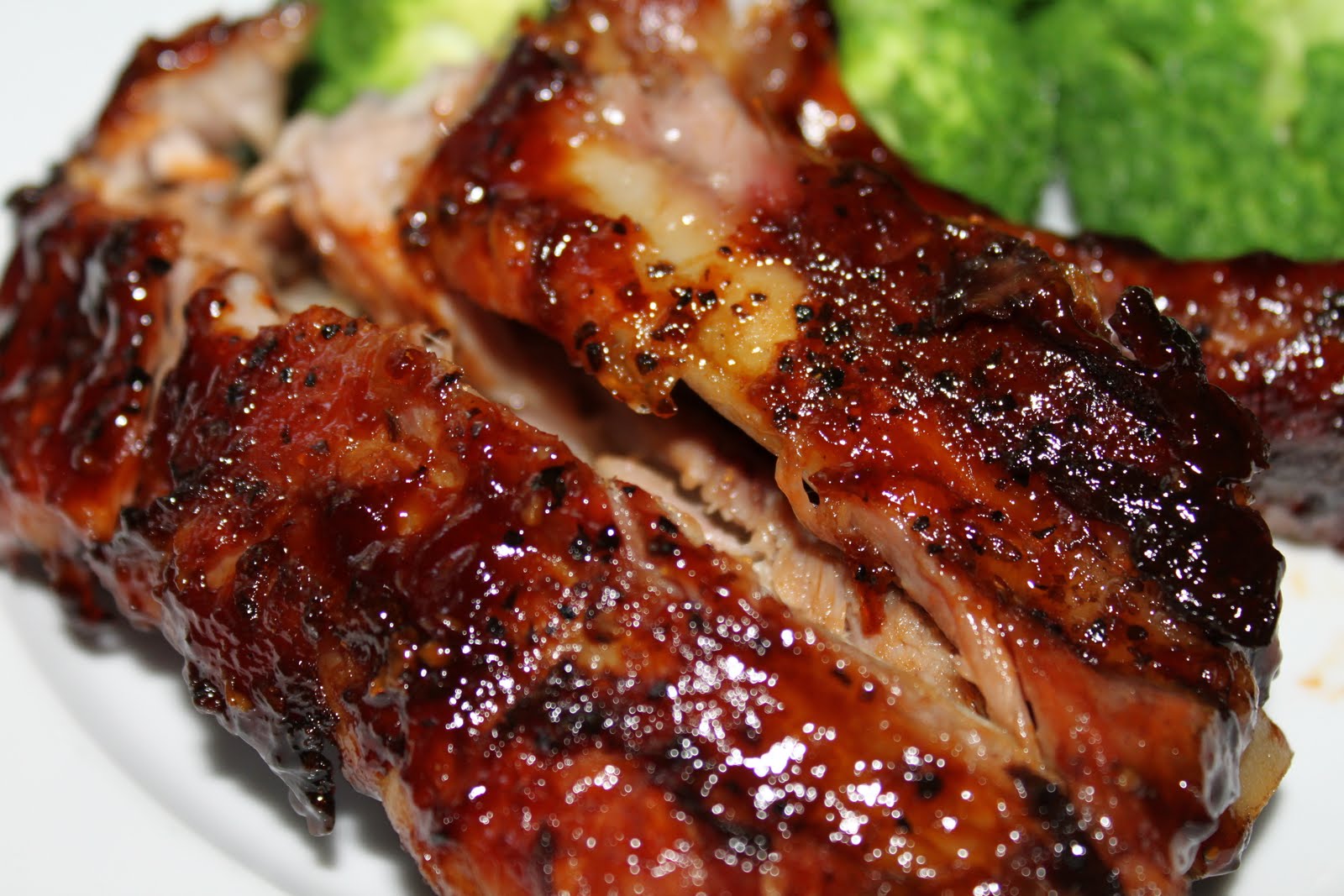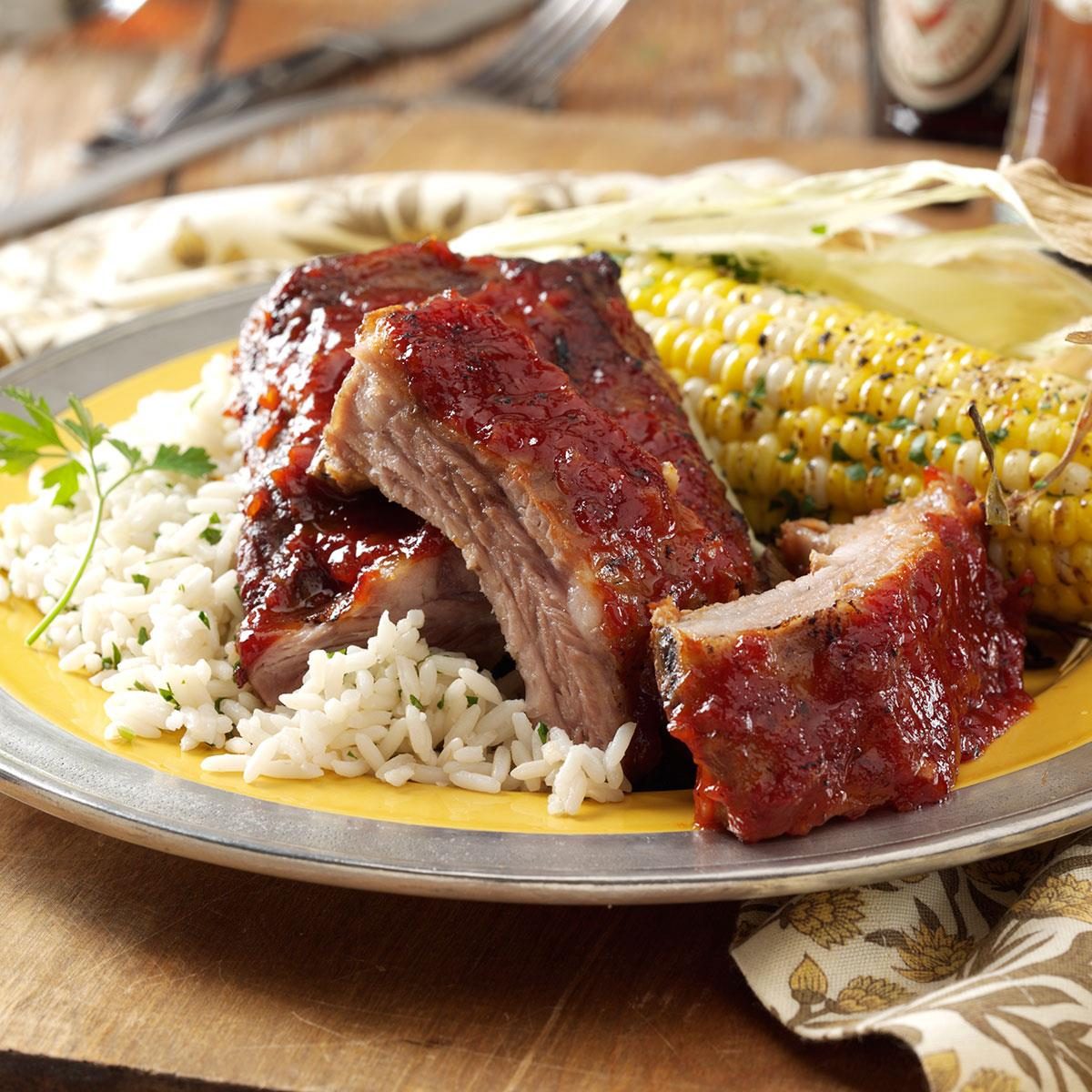Prepare to embark on a culinary journey that will tantalize your taste buds and leave you craving for more! Back ribs, with their succulent meat and smoky, savory flavors, are a barbecue staple that can elevate any gathering.
In this comprehensive guide, we will delve into the art of crafting the perfect back ribs. From selecting the finest ingredients to mastering various preparation and cooking techniques, we will guide you through every step to ensure you achieve ribs that are fall-off-the-bone tender and bursting with flavor.
Ingredients for Back Ribs Recipe
Preparing a tantalizing rack of back ribs requires an array of ingredients that blend harmoniously to create a symphony of flavors. Here’s a comprehensive list of everything you’ll need:
- Back Ribs: 1 full rack (about 3 pounds)
- Barbecue Sauce: 1 cup (your favorite brand or homemade)
- Brown Sugar: 1/4 cup
- Honey: 1/4 cup
- Apple Cider Vinegar: 1/4 cup
- Mustard: 2 tablespoons
- Salt: 1 tablespoon
- Black Pepper: 1 tablespoon
- Garlic Powder: 1 teaspoon
- Onion Powder: 1 teaspoon
- Smoked Paprika: 1 teaspoon
Variations and Substitutions
Feel free to experiment with variations and substitutions based on your preferences:
- Back Ribs: Baby back ribs can be used instead of full back ribs.
- Barbecue Sauce: Any type of barbecue sauce can be used, or you can create your own.
- Brown Sugar: Maple syrup or honey can be used instead.
- Honey: Agave nectar or maple syrup can be used instead.
- Apple Cider Vinegar: White vinegar or lemon juice can be used instead.
- Mustard: Dijon mustard or yellow mustard can be used.
- Spices: Adjust the amounts of salt, pepper, and spices to taste.
Preparation Methods for Back Ribs
To achieve tender and flavorful back ribs, various preparation methods can be employed, each offering unique advantages and resulting in distinct flavor profiles. Let’s delve into the most popular techniques and explore their intricacies.
The preparation method chosen will influence the overall texture, taste, and appearance of the ribs. Whether you prefer the classic smoky flavor of grilling or the succulent juiciness of braising, there’s a method that will cater to your culinary preferences.
Marinating
Marinating involves submerging the ribs in a flavorful liquid, typically comprising a combination of herbs, spices, acids, and oils. This technique allows the flavors to penetrate deeply into the meat, resulting in tender and juicy ribs.
To marinate the ribs, place them in a non-reactive container and cover them completely with the marinade. Refrigerate for a minimum of 4 hours, but ideally overnight or up to 24 hours. The longer the ribs marinate, the more intense the flavor will be.
Dry Rubbing
Dry rubbing is a simpler method that involves coating the ribs with a blend of dry spices and herbs. This technique creates a flavorful crust on the outside of the ribs while keeping the interior moist and tender.
To dry rub the ribs, combine the desired spices and herbs in a bowl. Apply the rub evenly over the surface of the ribs, ensuring that all sides are well coated. Let the ribs rest for at least 30 minutes before cooking to allow the flavors to adhere.
Brining
Brining is a technique that involves soaking the ribs in a salt solution. This process helps to enhance the flavor and tenderness of the ribs by allowing the salt to penetrate the meat and break down the proteins.
To brine the ribs, dissolve salt in cold water in a large container. Submerge the ribs in the brine solution and refrigerate for a minimum of 4 hours, but ideally overnight or up to 24 hours. After brining, rinse the ribs thoroughly with cold water and pat them dry before cooking.
Cooking Techniques for Back Ribs

Mastering the art of cooking back ribs requires exploring various techniques to achieve the desired tenderness, flavor, and texture. This guide delves into the intricacies of grilling, smoking, roasting, and braising, providing step-by-step instructions and highlighting the advantages and drawbacks of each method.
Grilling
Grilling is a popular method for its simplicity and imparts a smoky flavor to the ribs. Preheat your grill to medium heat (350-400°F). Season the ribs generously and place them on the grill, bone-side down. Grill for 1-1.5 hours per side, or until the internal temperature reaches 195°F.
Advantages: quick and easy; smoky flavor. Disadvantages: requires constant monitoring; can dry out easily.
Smoking
Smoking infuses ribs with a deep, rich flavor and tenderizes the meat. Set up your smoker to 225-250°F. Season the ribs and place them on the smoker racks. Smoke for 4-6 hours, or until the internal temperature reaches 195°F. Advantages: intense flavor; fall-off-the-bone tenderness.
Disadvantages: time-consuming; requires a smoker.
Roasting
Roasting is a convenient method that allows for precise temperature control. Preheat your oven to 300°F. Season the ribs and place them on a roasting rack set over a baking sheet. Roast for 2-3 hours, or until the internal temperature reaches 195°F.
Advantages: easy to monitor; allows for additional flavors (e.g., vegetables) in the pan. Disadvantages: less smoky flavor than grilling or smoking.
Braising
Braising combines slow cooking in a liquid with browning the ribs beforehand. Season the ribs and brown them in a large pot or Dutch oven over medium heat. Add liquid (e.g., beer, broth) to cover the ribs by about 1 inch.
Bring to a boil, then reduce heat and simmer for 2-3 hours, or until the meat is fall-off-the-bone tender. Advantages: incredibly tender; juicy and flavorful. Disadvantages: time-consuming; requires a large pot.
Sauce and Glaze Options for Back Ribs
The possibilities for sauces and glazes for back ribs are endless, allowing you to customize the flavor profile to your preference. Here are some popular options to consider:
Barbecue Sauce
- Ingredients:
- 1 cup ketchup
- 1/2 cup brown sugar
- 1/4 cup apple cider vinegar
- 1/4 cup Worcestershire sauce
- 1 tablespoon Dijon mustard
- 1 teaspoon smoked paprika
- Salt and pepper to taste
- Instructions: Combine all ingredients in a saucepan and bring to a simmer over medium heat. Reduce heat to low and simmer for 15-20 minutes, or until the sauce has thickened to your desired consistency.
Honey Garlic Glaze
- Ingredients:
- 1/2 cup honey
- 1/4 cup soy sauce
- 1/4 cup brown sugar
- 1 tablespoon minced garlic
- 1 tablespoon sesame oil
- Instructions: Whisk all ingredients together in a bowl until smooth. Brush the glaze over the ribs and cook according to your preferred method.
Side Dish Accompaniments for Back Ribs

To complement the smoky, savory flavors of back ribs, a range of side dishes can elevate the dining experience. From refreshing coleslaw to creamy potato salad and comforting cornbread, here are some classic and innovative accompaniments to consider:
Coleslaw
Coleslaw offers a crisp, refreshing contrast to the richness of back ribs. The classic version combines shredded cabbage, carrots, and onions in a tangy mayonnaise-based dressing. For a lighter option, try a vinegar-based dressing or incorporate shredded apple or raisins for sweetness.
Potato Salad
Potato salad provides a creamy, comforting side to back ribs. Boil and mash potatoes, then combine with mayonnaise, mustard, celery, and onion. Season with salt, pepper, and fresh herbs for a flavorful twist. For a German-style potato salad, use a vinegar-based dressing with bacon and dill.
Cornbread
Cornbread adds a sweet, savory element to the meal. Mix cornmeal, flour, sugar, baking powder, and salt. Add buttermilk or milk and melted butter, then bake in a cast-iron skillet or baking dish. For a cheesy variation, stir in shredded cheddar or Monterey Jack cheese.
Presentation and Serving Tips for Back Ribs
Showcase your succulent back ribs with a visually captivating presentation that tantalizes the senses. From eye-catching platters to elegant garnishes, these tips will elevate your ribs to a culinary masterpiece.
Garnishes and Platters
Enhance the aesthetic appeal of your ribs with vibrant garnishes. Fresh herbs like rosemary, thyme, or cilantro add a pop of color and a touch of aromatic freshness. Sliced scallions, thinly shaved onions, or diced tomatoes provide a crisp and tangy contrast.
For a more rustic touch, consider using charred corn kernels or grilled pineapple wedges.
Choose a platter that complements the size and quantity of your ribs. A large wooden cutting board provides a rustic and earthy backdrop, while a sleek ceramic or glass platter exudes sophistication. Arrange the ribs in an aesthetically pleasing manner, allowing for easy access and showcasing their golden-brown exterior.
Serving Utensils
Provide appropriate serving utensils to make it effortless for guests to enjoy their ribs. Sharp carving knives and sturdy forks allow for clean and precise cuts, ensuring every bite is savored. Consider using small ramekins for serving sauces and glazes, allowing diners to customize their ribs to their preferred taste.
Nutritional Information for Back Ribs
Back ribs, like other pork cuts, offer a range of nutrients, but also contain a significant amount of fat. Understanding the nutritional profile of back ribs is crucial for making informed dietary choices.
A 3-ounce serving of cooked back ribs provides approximately:
- 220 calories
- 25 grams of protein
- 15 grams of fat
- 2 grams of carbohydrates
- 100 milligrams of sodium
Health Benefits:
- Protein: Back ribs are a rich source of protein, essential for building and repairing tissues.
- B Vitamins: Pork is a good source of B vitamins, which play a vital role in energy production and metabolism.
Health Concerns:
- Fat: Back ribs contain a high amount of fat, including saturated fat, which can contribute to heart disease and other health issues if consumed in excess.
- Sodium: The sodium content in back ribs can be high, which may pose concerns for individuals with high blood pressure or heart conditions.
Consuming back ribs in moderation as part of a balanced diet can provide some nutritional benefits, but it’s important to be aware of the potential health concerns associated with their high fat and sodium content.
Outcome Summary
As you embark on your back ribs cooking adventure, remember to experiment with different flavors and techniques to find what suits your palate best. Whether you prefer a classic barbecue sauce or a tangy glaze, the possibilities are endless. So fire up your grill, gather your loved ones, and savor the mouthwatering experience of perfectly cooked back ribs.
Frequently Asked Questions
What is the best way to marinate back ribs?
For a flavorful and tender result, marinate your back ribs in a mixture of your favorite spices, herbs, and liquids. Allow the ribs to marinate for at least 4 hours, or up to overnight, to allow the flavors to penetrate deeply.
Can I use different types of wood for smoking back ribs?
Yes, experimenting with different types of wood can impart unique flavors to your smoked back ribs. Popular choices include hickory, oak, and applewood, each offering its own distinct aroma and taste.
How can I ensure my back ribs are cooked evenly?
To achieve even cooking, it is important to rotate your ribs every 30-45 minutes during grilling or smoking. This helps prevent one side from overcooking while the other remains undercooked.
What are some healthy side dishes to serve with back ribs?
To balance the richness of the ribs, consider serving them with fresh and healthy side dishes such as a crisp coleslaw, a tangy potato salad, or a light and fluffy cornbread.
